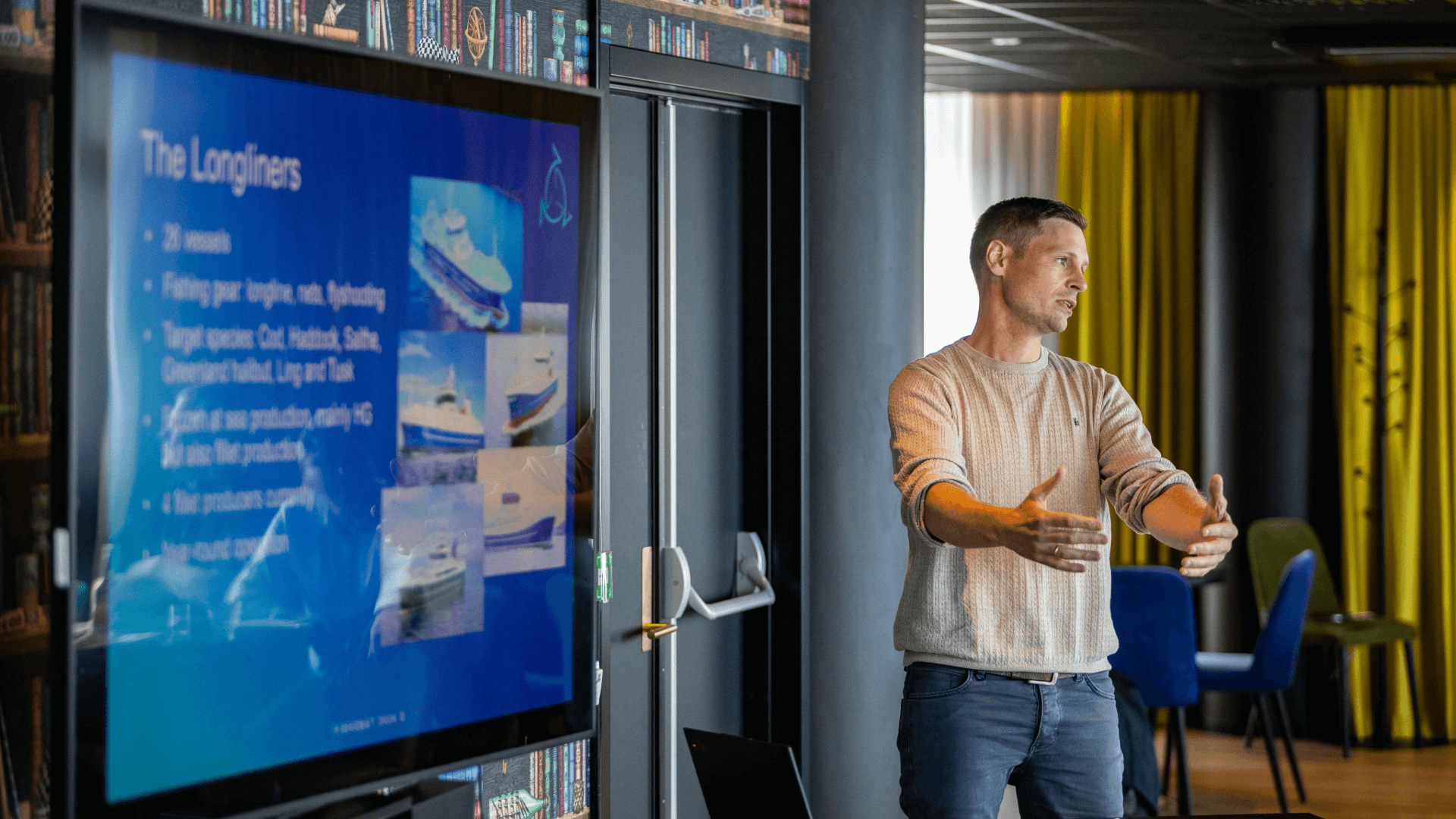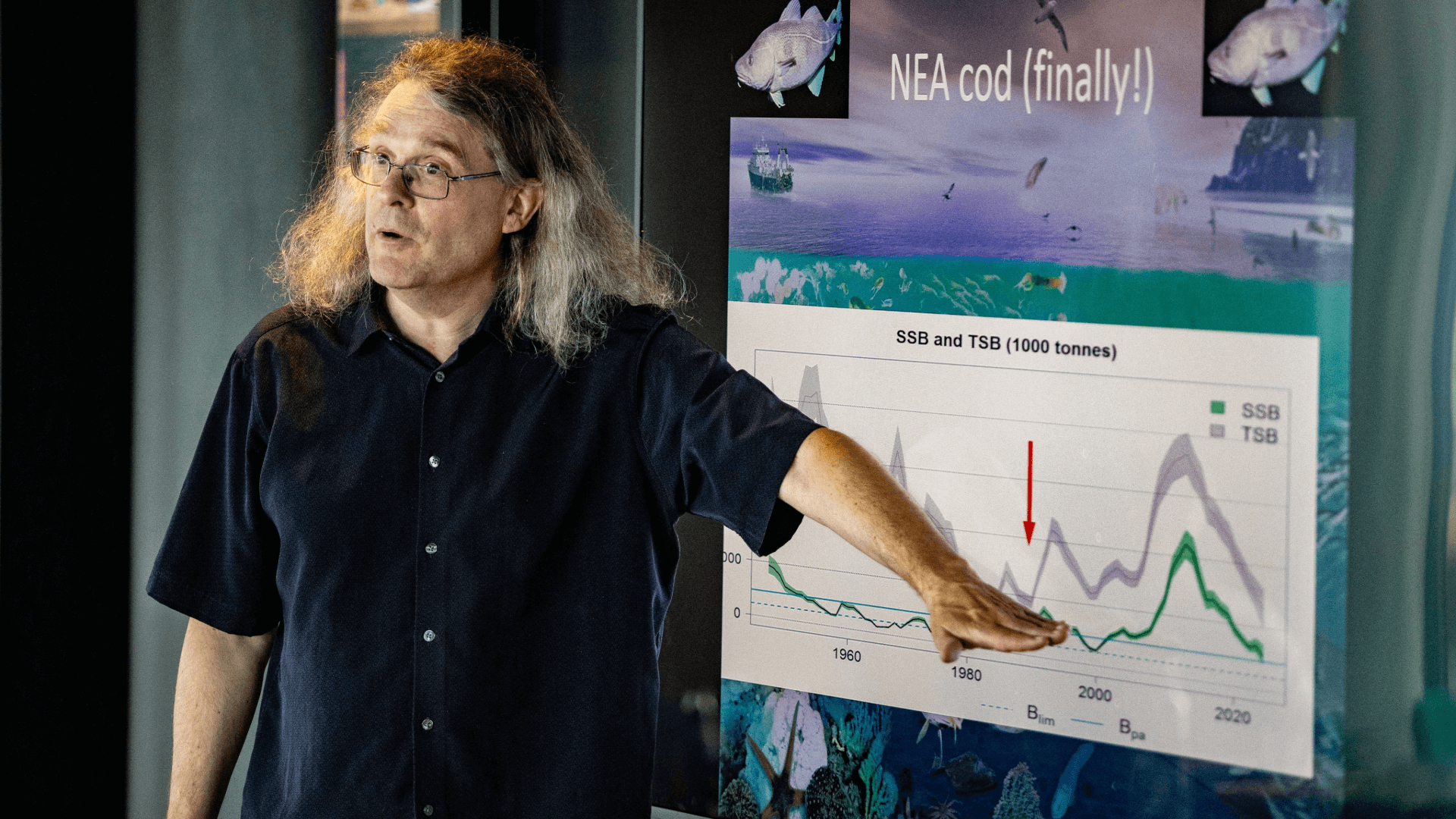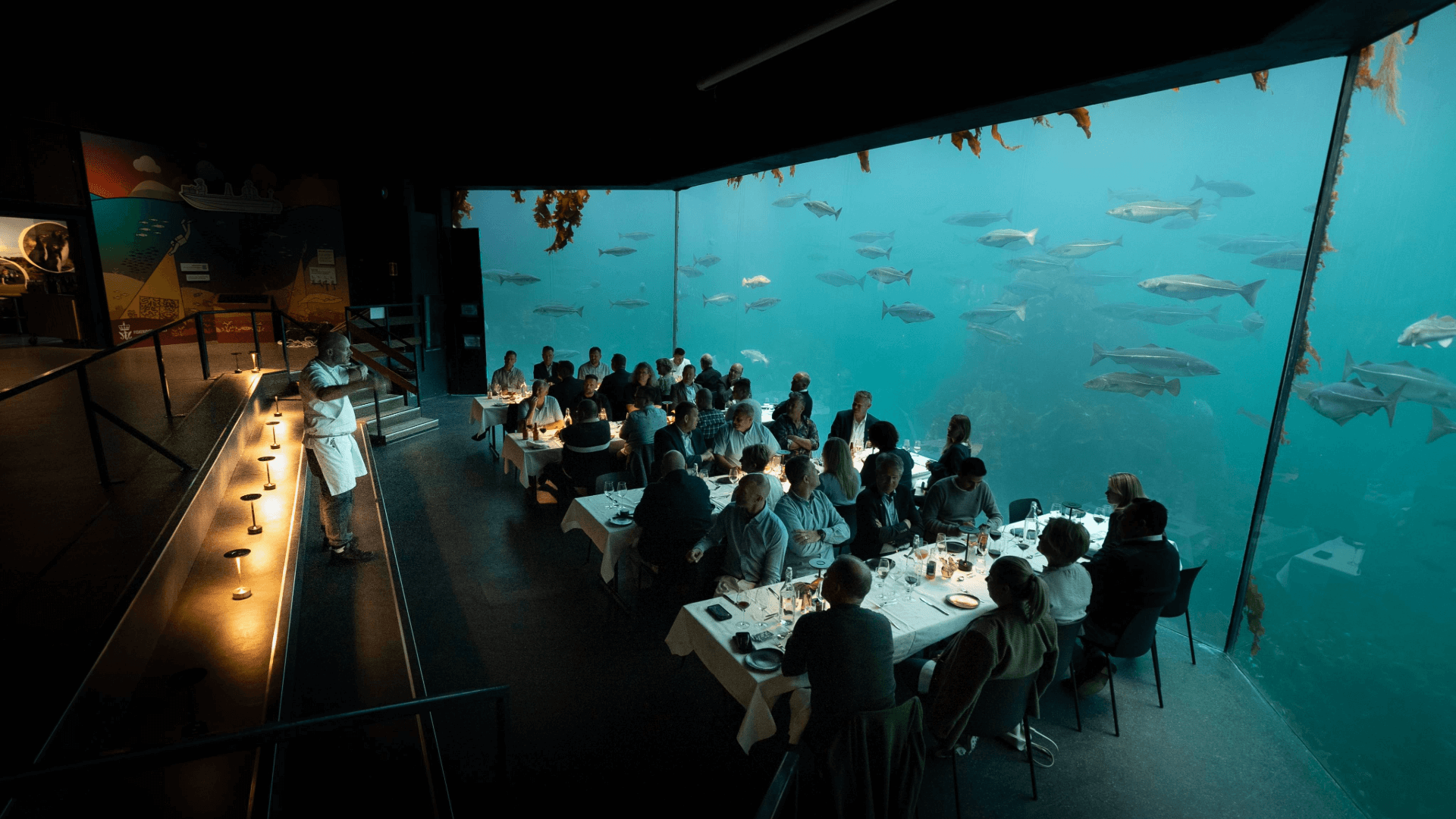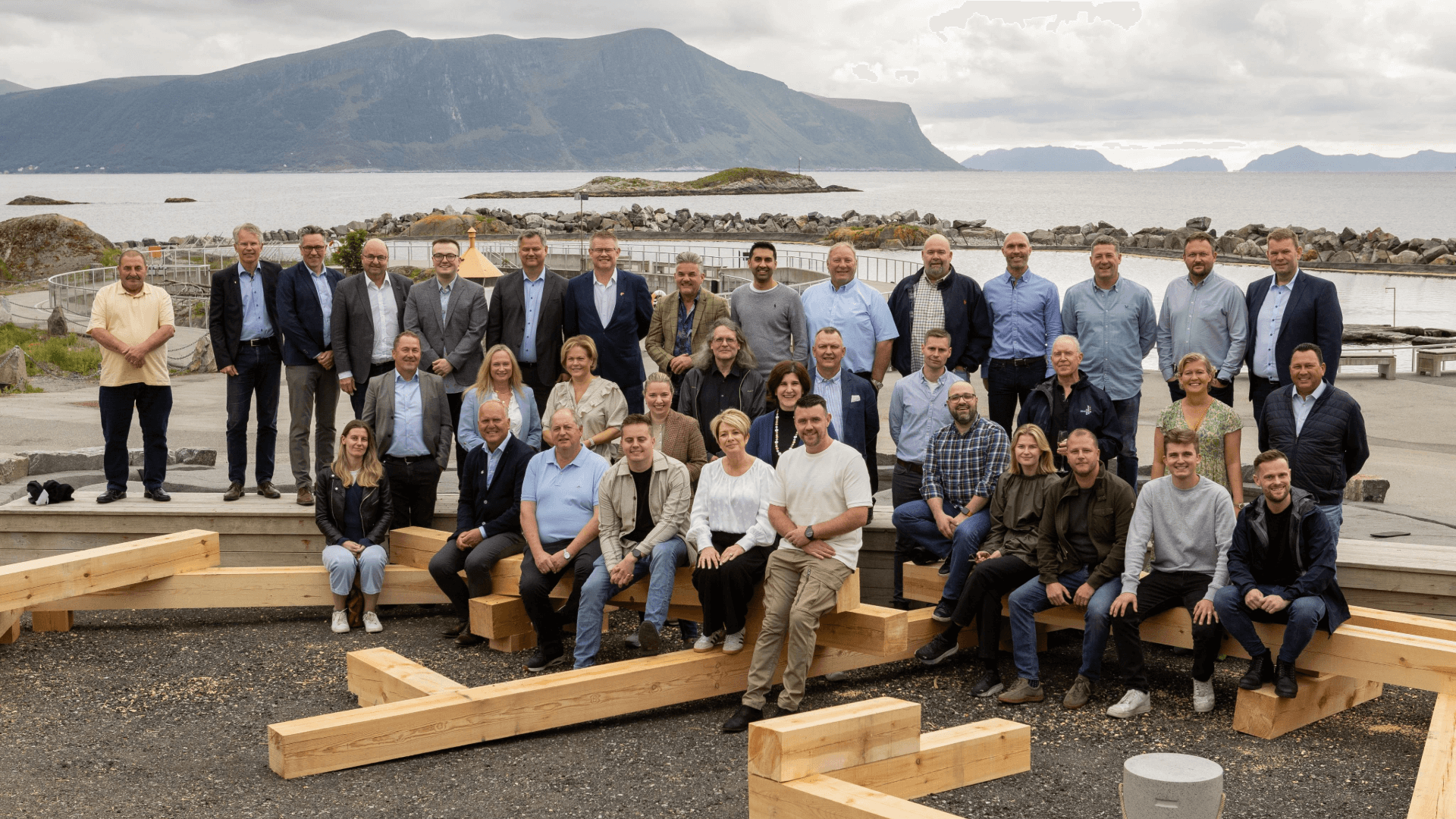Day One of the Fish & Chip Study Program in Ålesund
Posted by Stelios on 1st Jul 2024 Reading Time:
When Ceres clinched the Supplier of the Year Award at the NFFF National Fish & Chip Awards, I had no clue that this accolade would soon whisk me away to Norway for a three-day study trip.
Photo Credit: Victoria Braathen (click to see full photos from Day One of the Fish & Chip Study trip in Ålesund)
The Norwegian Seafood Council (NSC) is crucial in fostering markets for Norwegian seafood and collaborating with the local industry and international partners. With headquarters in Tromsø and representatives in key global markets, the NSC is financed by a tariff on all Norwegian seafood exports. The "Seafood from Norway" mark represents the nation's commitment to quality and sustainability.
Our mission on this study trip was to understand Norway's unique geography, diverse seafood offerings, and the industry's sustainable fishing techniques honed over generations.
Accompanying me on this trip were notable figures from the fish and chip industry:
- Andrew Crook, President of the NFFF
- Josette Foster, Regional Director NFFF
- Ryan Hughes, Ship Deck Caerphilly, Winner Takeaway of the Year
- George Morey, Knights Fish Restaurant, Winner Restaurant of the Year, Knights Fish Restaurant
- Graham Kennedy, Bells Fish & Chips, Winner Field to Frier Award & Winner Multiple Operator of the Year
- Jamie and Tommy Russo, Redcloak Fish Bar, Winner Drywite Young Fish Frier of the Year & Winner Best Newcomer
- Jamie Toland, Taylors Fish & Chips, Winner Employee of the Year
- John Evans, Jojo's Fish & Chips, Winner Mobile Operator of the Year
- Geoff Whitehead, Whiteheads Fish & Chips, Winner Environment and Sustainability Award
- Alan McColm, The Real Food Cafe, Winner Staff Training and Development Award
- Marcus French, Frenchs Fish & Chips, Quality Accreditation Champion
- Zohaib Hussain, Zero Plus Fish Bar, Winner Marketing & Innovation Award
- Kelzey Wright, Wrights Fish & Chips, Winner Overseas Fish and Chip Shop
- Reece Head, Fry Magazine
- Austen Dack, Chippy Chat
- Sophie Witts, The Caterer
- Last but not least, our brilliant hosts from the Norwegian Seafood Council, Victoria Braathen and Bojana Dos Santos
(click to see full photos from Day One of the Fish & Chip Study trip in Ålesund)
The Journey Begins
Ryan, John, Zohaib, and I spent the night in an apartment near Heathrow Airport. Despite a somewhat temperamental boiler and my alleged snoring (which I can't confirm or deny), we managed to rest before our early start. By 5:45 am, we were at Heathrow, meeting Victoria and breezing through security. In the lounge, we mingled with our peers and met Kelzey Wright, fresh from Atlanta.
Travelling from Heathrow to Ålesund involved a layover in Oslo, but our flights were seamless despite the looming threat of strikes. On arrival, we checked into our hotel and set out to explore the town after dropping off our luggage. Surprisingly, the weather was milder than expected, prompting me to question my choice of heavy winter clothes.
Tommy and Jamie Russo, Geoff Whitehead, John Evans, and George Morey joined me for a little stroll. The scenery outside the hotel was stunning, a testament to Norway's natural beauty.

Enlightening Seminars
Our afternoon commenced with a series of mini-seminars by Norwegian seafood and sustainability experts. Bjørn-Erik Stabel, Head of Strategy and Sustainability at at Norwegian Seafood Council, highlighted the importance of traceability, sustainability, and the origins of our seafood. He emphasised how modern consumers demand ethical practices and transparency. Here are some key takeaways from Bjørn's talk:
- Traceability sourcing adds value: Consumers want to know where their seafood comes from.
- Sustainability matters: The low carbon footprint and efficient water usage of seafood make it an attractive option in the food industry.
- Origin matters: Knowing the source of food helps consumers make informed choices.
- Doing the right thing: Ethical practices are increasingly important to consumers.
- The role of origin: As sustainability becomes more important, the origin of food helps consumers navigate their choices better.
Next, Sturla Roald from Fiskebåt detailed the operations of Norway's Frozen at Sea fishing fleet, emphasising sustainable practices and the importance of maintaining a profitable yet environmentally conscious fleet.
Sturla Roald's presentation provided an in-depth look at the Norwegian Frozen at Sea fishing fleet, managed by Fiskebåt, an organisation representing around 200 larger fishing vessels in Norway. The fleet, including large and small vessels, has evolved towards fewer but more efficient operations. Among the 5,503 vessels in Norway, 260 are over 28 meters and contribute more than 70% of the total catch value. The fleet is divided into cod trawlers and longliners, targeting species like cod, haddock, saithe (coley), redfish, Greenland halibut, and prawns, with many vessels licensed for year-round operations and equipped for frozen-at-sea production, ensuring top quality and sustainability.
Emphasising sustainability, Sturla highlighted that quotas are set based on recommendations from the International Council for the Exploration of the Sea (ICES) and that Norway participates in international quota agreements. The fleet operates under strict licensing and regulatory oversight from the Directorate of Fisheries and the Norwegian Coast Guard. Quality and hygiene are paramount, with vessels required to meet national and EU standards and undergo approval by the Norwegian Food Safety Authority. This dedication to sustainable fishing practices, advanced technology, and high-quality standards underscores the fleet's commitment to maintaining a low carbon footprint, excellent working conditions for crews, and efficient utilisation of catches, significantly reducing food waste.
Josette Foster inquired about working conditions and gender diversity in the industry, revealing that women constitute around 3% of the workforce on fishing vessels. Sturla explained that while it is a male-dominated field, efforts are being made to improve inclusivity.

Daniel Howell from the Norwegian Institute of Marine Research captivated us with Norwegian fisheries' history and current state. From the Viking era to modern sustainable practices, he detailed the significance of various species, particularly capelin, in maintaining the ecosystem.
Daniel, a seasoned fisheries scientist from the Norwegian Institute of Marine Research, delivered an enlightening presentation on the Barents Sea marine ecosystem and its critical fish stocks. He traced the evolution of Norwegian fisheries from the Viking era through the Hansa trade, noting how historical events like World War II influenced fish catches due to partial moratoriums and favourable warmer waters for cod and haddock. Howell emphasised the interconnectedness of the ecosystem, highlighting the crucial role of capelin, a small oily fish that serves as a key food source for cod, haddock, and saithe. A collapse in capelin stocks in the late 1980s led to stringent regulations, allowing fishing only after the cod feeding season since 1991.
Howell provided a detailed analysis of Northeast Arctic Cod, the largest cod stock in the world, managed through a Harvest Control Rule. He explained that despite high stock levels a decade ago, the numbers have declined due to poor recruitment, with 2024 quotas set to stabilise around 300,000-350,000 tonnes. Similarly, he discussed the variability of Northeast Arctic Haddock, with a 2024 quota of 140,000 tonnes. Daniel emphasised the importance of sustainable fishing practices and extensive regulations to minimise the catch of unwanted, especially small, fish. He also highlighted the collaborative efforts between Norway and Russia in managing key species, even amidst geopolitical tensions, following ICES assessment procedures. Charts illustrating historical trends in herring biomass and catch data for NEA cod, saithe (coley), and haddock underscored the significance of fish size and sustainable practices in maintaining healthy fish populations.
In conclusion, Howell reflected on the long history of commercial fisheries, noting significant stock recoveries since the 1990s due to reduced fishing pressure and efforts to avoid catching small fish. He predicted that while current trends show a decline in cod and haddock, stabilisation is expected in the coming years, thanks to ongoing sustainable management practices. His presentation provided a comprehensive overview of the challenges and successes in managing the Barents Sea's rich marine resources, underscoring the importance of continued international cooperation and adherence to scientific guidelines.
Evening Exploration
After the seminars, Ryan, Reece Head from Fry Magazine, and I decided to explore Ålesund. We stumbled upon what claimed to be "probably the best fish and chips in the world". Ryan couldn't resist trying a portion, and while it was good, we were not entirely convinced it was the best in the world; I can't blame a trier, though.

Our evening culminated with a visit to the Atlanterhavsparken Aquarium, where we met esteemed Norwegian hosts. The chefs served a sustainable and delicious spread, showcasing Norway's finest seafood. I had the pleasure of engaging in stimulating conversations, particularly with Odd Kristian Dahle from Fiskebåt, and bombarding Daniel Howell with questions over dinner.
Reflections on Day One
Our first day in Ålesund was a whirlwind of learning and laughter. We delved deep into the intricacies of Norwegian fishing practices, absorbed the stunning scenery, and enjoyed the camaraderie of fellow fish and chip winners. It was an enlightening and entertaining start to what promised to be an unforgettable journey.







